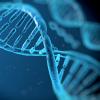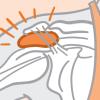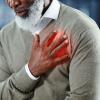Search

Making Up Sleep May Not Help
Catching up on sleep doesn’t reverse damage to the body caused by sleep deprivation, according to a new study. In fact, so-called recovery sleep may make some things worse. About one of every three adults regularly gets less than seven hours of sleep a night. Over time, lack of sleep can lead to changes in [qtip:metabolism|Chemical changes in the body that create the energy and substances you…

Getting a Genetic Test
Your doctor may suggest a genetic test to detect your risk of certain health problems, such as cancer. If you have symptoms of a disease, a genetic test may help with diagnosis. Genetic testing looks for changes in genes. It’s usually done in a lab using a blood sample. Thousands of genetic tests are currently available. Deciding whether to get a genetic test isn’t easy. It’s important to…

Science Education: Technology
Learn about cutting-edge health care technologies and how NIH-supported researchers are improving them. Topics include tissue engineering, biomaterials, sensors, and more. You can get an app to discover how medical scans work. Another can take you inside a surgery room of the future.

Parenting Teens
The teenage years are filled with change. Body, mind, and feelings are maturing quickly. Teens are also learning about who they are and who they want to become. To do that, they need to try new things. But that means taking risks. “Parenting during the teen years can be a very exciting but also a really risky time,” explains Dr. Kevin Haggerty, an NIH-funded prevention researcher at the…, Build a Positive Relationship, Creating a positive, trusting relationship with your kids is key. It makes them more likely to listen to your advice and follow your rules. “Positive parenting really means forming a positive relationship with your child that’s focused more on praise, support, and incentives and less on negative things like yelling, criticizing, or nagging,” explains Stormshak. “If you could choose one thing to…, Keep in Touch, As your kids age, you’re with them less often. That makes building trust and good communication important. Your ability to know what’s going on in their lives largely depends on what they’ll share with you. “Monitor what’s going on with your adolescent in ways that don’t destroy bonding or connecting, but in ways that promote it,” Haggerty says. “Have conversations, ask questions, know who your…, Set Limits and Consequences, Parents can also help teens avoid risky behavior by setting clear limits and expectations ahead of time and consistently following through with consequences. “We find that parenting matters even the year after high school,” explains Simons-Morton. His studies have found that young adults whose parents had high expectations for them to not abuse alcohol were less likely to increase how much they…

Beating Bursitis
Almost everyone has joint pain at some point in life. It can flair up suddenly. Or it can start off mild and get worse over time. A common cause of joint pain is bursitis. Bursitis happens when a bursa in a joint becomes inflamed. (When you see “itis” at the end of a medical word, it means [qtip:inflammation|Heat, swelling, and redness caused by the body’s protective response to injury or…

Telemedicine May Affect Quality of Care
Have you used a computer, smart-phone, or tablet to talk with a doctor? This is called telemedicine. A study suggests that in-person doctor visits provide better care for children with certain infections. Researchers used claims data from a health plan to look at visits for children with respiratory illnesses. These included colds, sore throats, and ear infections. More than 5,000 children…

Sex and Gender
Are you male or female? The answer to this seemingly simple question can have a major impact on your health. While both sexes are similar in many ways, researchers have found that sex and social factors can make a difference when it comes to your risk for disease, how well you respond to medications, and how often you seek medical care. That’s why scientists are taking a closer look at the links…, Defining Differences, — Sex is biological. It’s based on your genetic makeup. Males have one X and one Y [qtip:chromosome|Structure made of genetic material and proteins. Humans normally have 46 chromosomes (23 pairs) in each cell.] in every cell of the body. Females have two X chromosomes in every cell. These cells make up all your tissues and organs, including your skin, heart, stomach, muscles, and brain. Gender is…, Influences on Health, — “Sex and gender play a role in how health and disease affect individuals. There was a time when we studied men and applied those findings to women, but we’ve learned that there are distinct biological differences between women and men,” explains Dr. Janine Austin Clayton, who heads research on women’s health at NIH. “Women and men have different hormones, different organs, and different…, Attention to Addiction, — Scientists are finding that addiction to nicotine and other drugs is influenced by sex as well. “When it comes to addiction, differences in sex and gender can be found across the board,” says Dr. Sherry McKee, lead researcher at an NIH-funded center at Yale University that studies treatments for tobacco dependence. “There are different reasons men and women pick up a drug and keep using a drug…, Building Our Understanding, — “NIH now requires scientists to ask: ‘What are my research results for males and for females?’” Clayton says. “We need to learn more about the roles of sex and gender in health and disease. Understanding these influences improves health and saves the lives of both men and women.” You can improve your health and that of your loved ones by being more aware of sex and gender differences. See the…

Smoking and Your Heart
Smoking tobacco can cause many health problems. Did you know that it can harm your heart and blood vessels? Smoking is a risk factor for heart disease, which can lead to heart attack, heart failure, and death. About one of every three people in the U.S. dies from heart disease. Tobacco smoke contains many toxic chemicals. Once those chemicals get inside your body, they travel around in your blood…

Coping With Cancer
Cancer and its treatment can change how you feel about yourself and how you live each day. Learn how to manage the emotions and handle common family issues. Discover how to adjust to the life changes cancer brings and how to plan for care after cancer treatment.

Delicious Heart-Healthy Eating
Making the move to heart-healthy eating can help lower your risk for heart disease and other conditions. Need help starting a healthy eating plan? Find tips for shopping, cooking, and eating healthy. And check out more than 100 recipes. You can even save favorites to your own personalized recipe box on the site.
NIH Office of Communications and Public Liaison
Health and Science Publications Branch
Building 31, Room 5B52
Bethesda, MD 20892-2094
Contact Us:
nihnewsinhealth@od.nih.gov
Phone: 301-451-8224
Share Our Materials: Reprint our articles and illustrations in your own publication. Our material is not copyrighted. Please acknowledge NIH News in Health as the source and send us a copy.
For more consumer health news and information, visit health.nih.gov.
For wellness toolkits, visit www.nih.gov/wellnesstoolkits.
